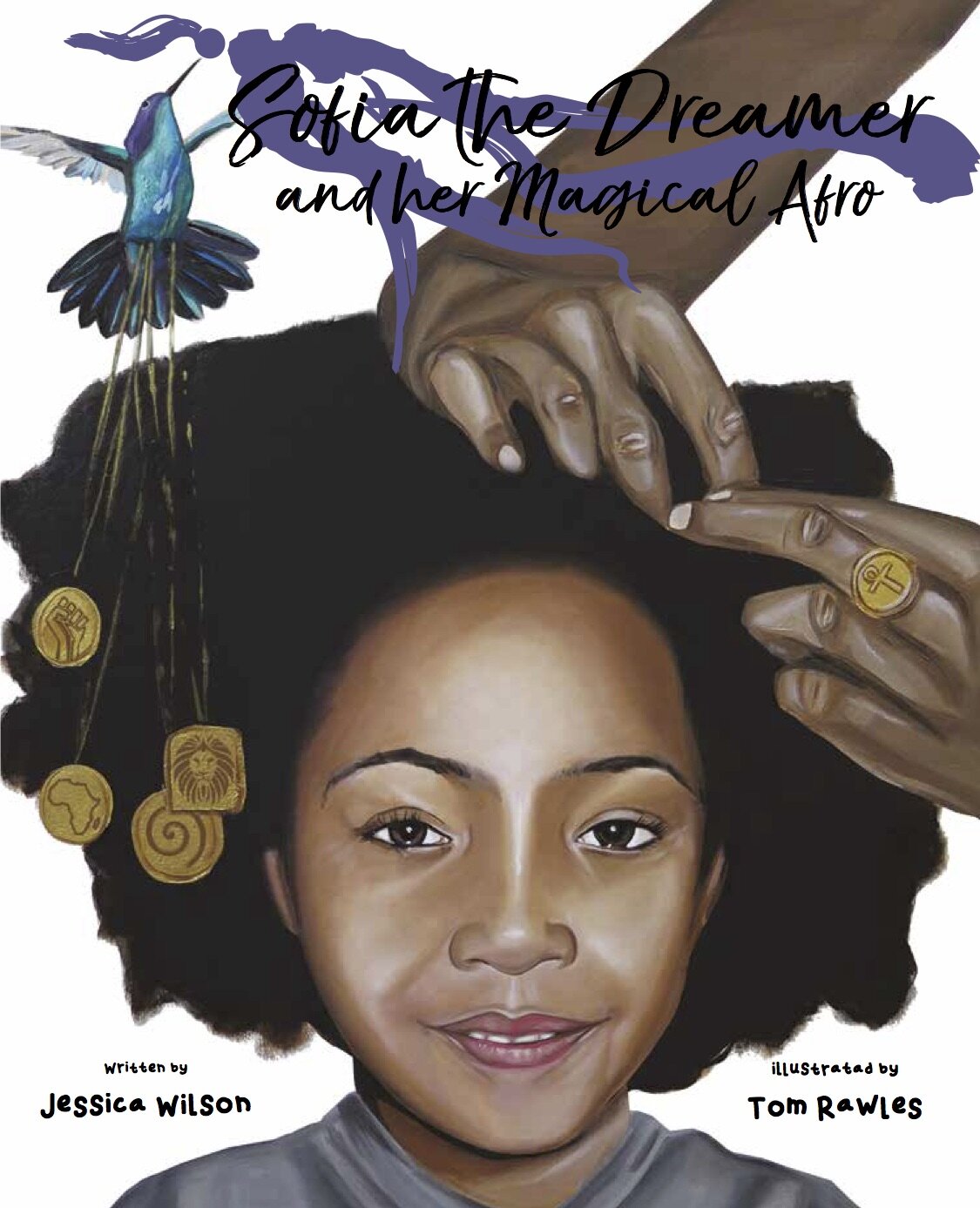Inspiring Young Readers
 posted on 29 May 2020
posted on 29 May 2020
Sofia the Dreamer and her Magical Afro by Jessica Wilson, illustrated by Tom Rawles
When travelling in the US over the last few years, we have spotted several beautiful children’s books with the focus on afro hair. Finding such a range of books in the UK is still more of a challenge, so this is a welcome addition. It has already received a ‘Go Fund Me’ award in March 2018 and has been featured by The British Blacklist and online platform ‘Brown Girls Who Write’.
In many cultures, hair care is a communal affair providing the chance to have conversations, share stories and other forms of entertainment. Wherever you live, the time consuming ritual of caring for afro hair is well known and a recognisable part of many children’s daily routine. The care aspect is sometimes the focus of picture books for younger children, but this one is about so much more. The back cover blurb sums up this complexity rather nicely:
‘Sofia travels to her dreams visiting a Jamaican Rastafarian, African ancestor and Black Panther whose stories help to unpick the history, heroes and joys entangled in afro hair’.
I loved the bold image on the front cover with the child staring defiantly out at the reader. The picture dominates the space with even the book title featured against the backdrop of her abundant hair. On the first double page spread we see her still looking out as her mum’s hands get to work on brushing her hair on a Sunday afternoon. She sings as she does this, and this is part of the spell that makes Sofia feel sleepy. She remembers an album cover featuring a man dancing and this transports her to memories of Jamaica. The next page shows a range of photographic memories including a Rastafarian man and we are transported magically into a strange vision of a tiny Sofia standing on his shoulder as he explains a bit about Rastafarianism.
The next Sunday her vivid imagination takes her to Los Angeles where she meets a Black Panther woman whose impressive afro is even bigger than Sofia’s. Here she learns another succinct history lesson:
“My hair is a symbol of POWER,”,
declares the woman, raising her fist.
“I stand for EQUAL RIGHTS,
FREEDOM and JUSTICE.”
On the third magical Sunday, her mum adds a tiny white shell to Sofia’s intricate canerow braid. When she touches this, she swoops through time and space to meet a solemn woman who is harvesting crops. She explains the history of canerows, a style that originated in Ethiopia, and conveys the important message that underlies the whole book:
“Knowing your history is important
like sowing seeds, the better
you water, the more you reap”.
The following Sunday, Sofia misses out on the hair washing and combing because she is ill, but she still learns something important about her special relationship with her mum.
This poetic, sometimes surreal, illustrated book is a visual treat which would be an excellent resource in any school classroom. The publicity recommends that ‘the rhythm and rhyme of the story lends it to being read aloud and plants the work within Caribbean oral story telling traditions…’It is also one that any child who has hair that needs a lot of care and attention will enjoy reading.
Strongly recommended for readers of any age.
Karen Argent
May 2020